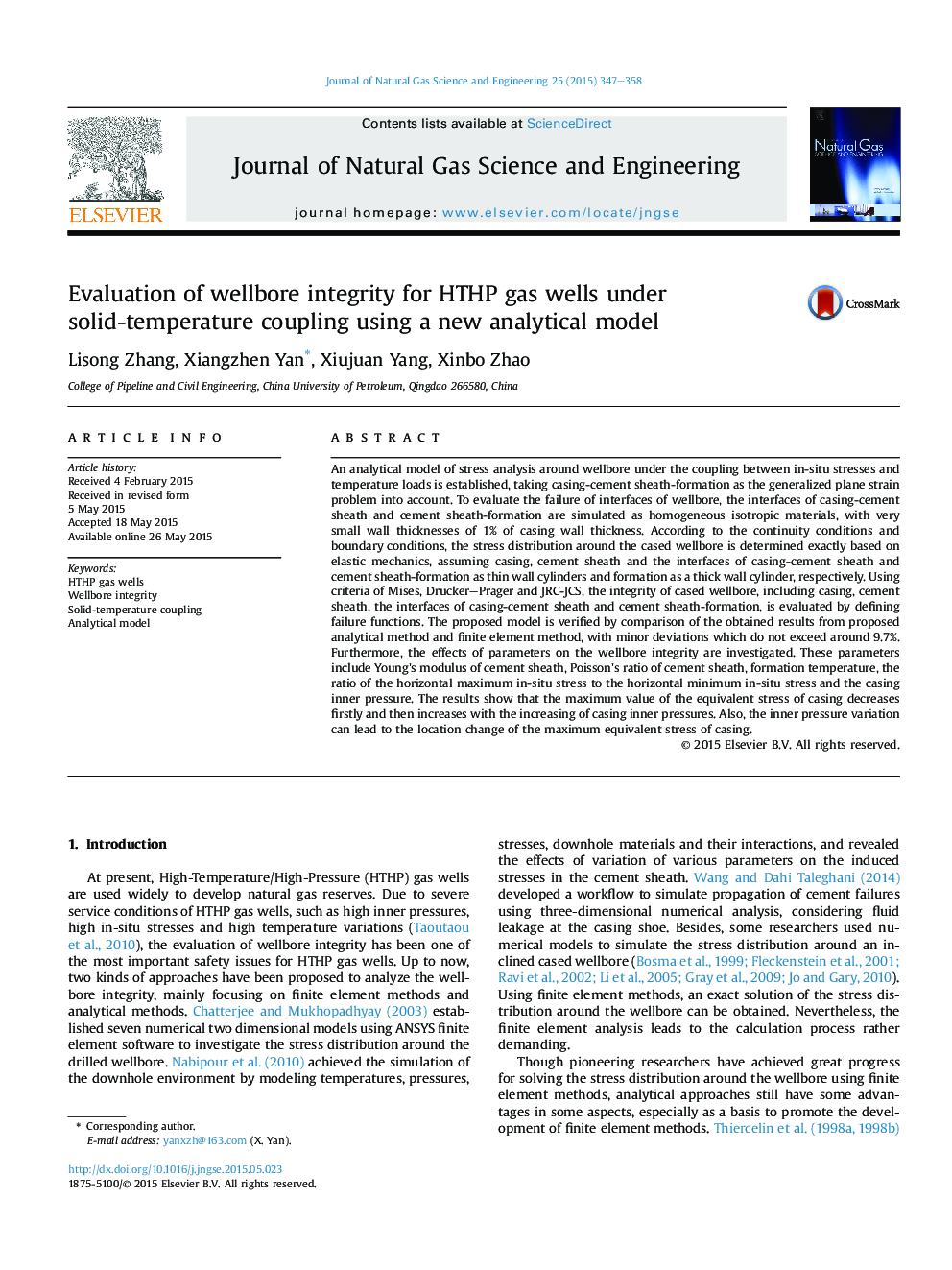| Article ID | Journal | Published Year | Pages | File Type |
|---|---|---|---|---|
| 1757714 | Journal of Natural Gas Science and Engineering | 2015 | 12 Pages |
•An analytical model of wellbore integrity evaluation for HTHP gas wells is derived.•Failure functions of wellbore integrity are given based on different criterions.•The results of proposed model agree well with those of finite element model.•The effects of parameters on the wellbore integrity are investigated.
An analytical model of stress analysis around wellbore under the coupling between in-situ stresses and temperature loads is established, taking casing-cement sheath-formation as the generalized plane strain problem into account. To evaluate the failure of interfaces of wellbore, the interfaces of casing-cement sheath and cement sheath-formation are simulated as homogeneous isotropic materials, with very small wall thicknesses of 1% of casing wall thickness. According to the continuity conditions and boundary conditions, the stress distribution around the cased wellbore is determined exactly based on elastic mechanics, assuming casing, cement sheath and the interfaces of casing-cement sheath and cement sheath-formation as thin wall cylinders and formation as a thick wall cylinder, respectively. Using criteria of Mises, Drucker–Prager and JRC-JCS, the integrity of cased wellbore, including casing, cement sheath, the interfaces of casing-cement sheath and cement sheath-formation, is evaluated by defining failure functions. The proposed model is verified by comparison of the obtained results from proposed analytical method and finite element method, with minor deviations which do not exceed around 9.7%. Furthermore, the effects of parameters on the wellbore integrity are investigated. These parameters include Young's modulus of cement sheath, Poisson's ratio of cement sheath, formation temperature, the ratio of the horizontal maximum in-situ stress to the horizontal minimum in-situ stress and the casing inner pressure. The results show that the maximum value of the equivalent stress of casing decreases firstly and then increases with the increasing of casing inner pressures. Also, the inner pressure variation can lead to the location change of the maximum equivalent stress of casing.
